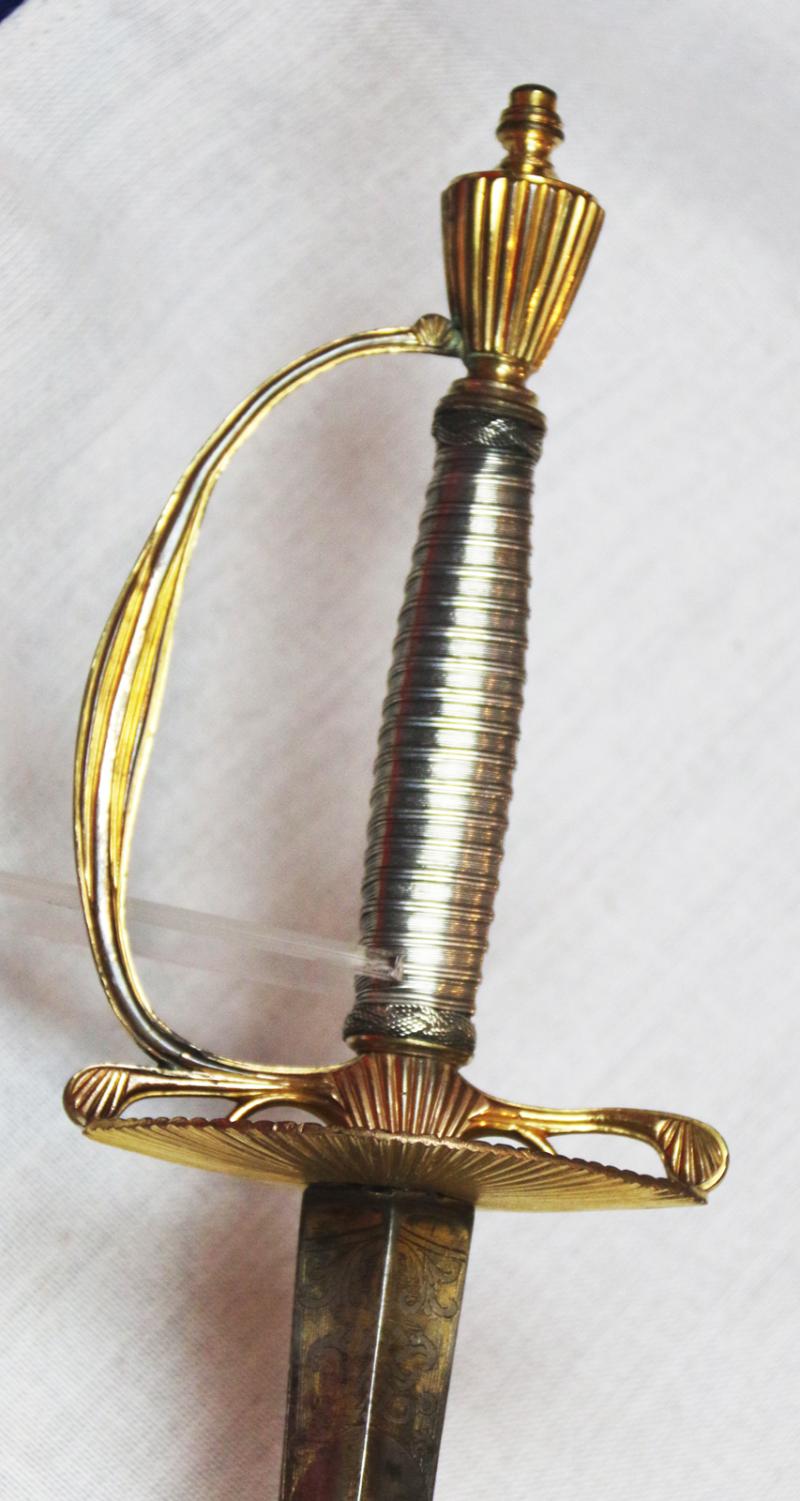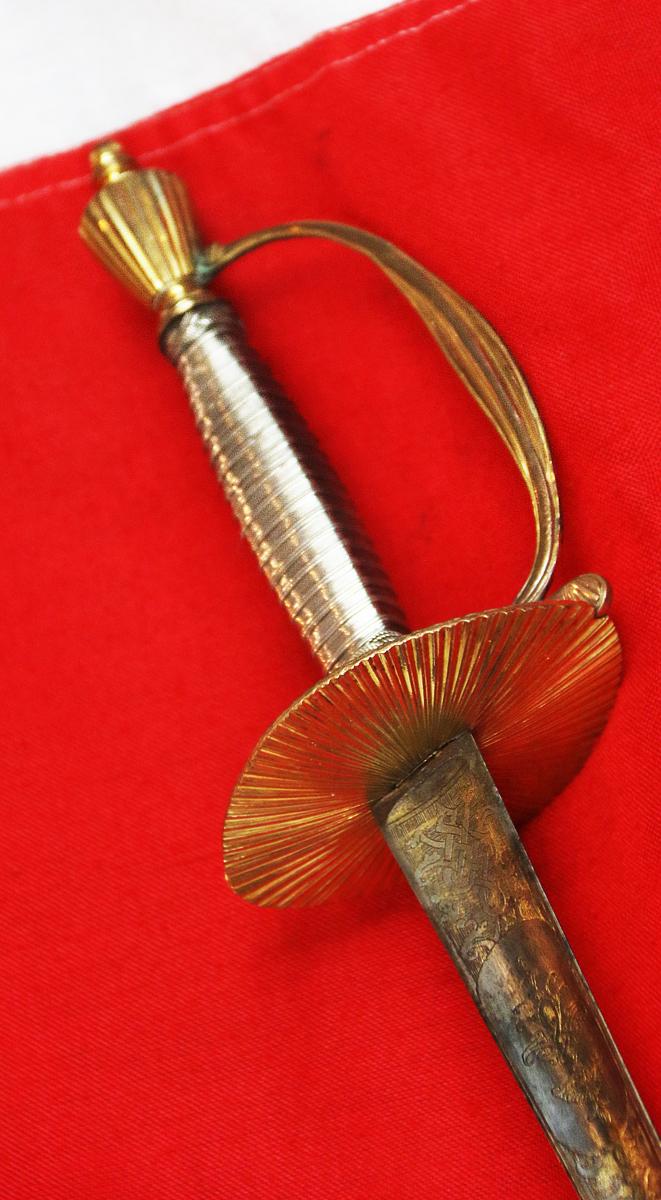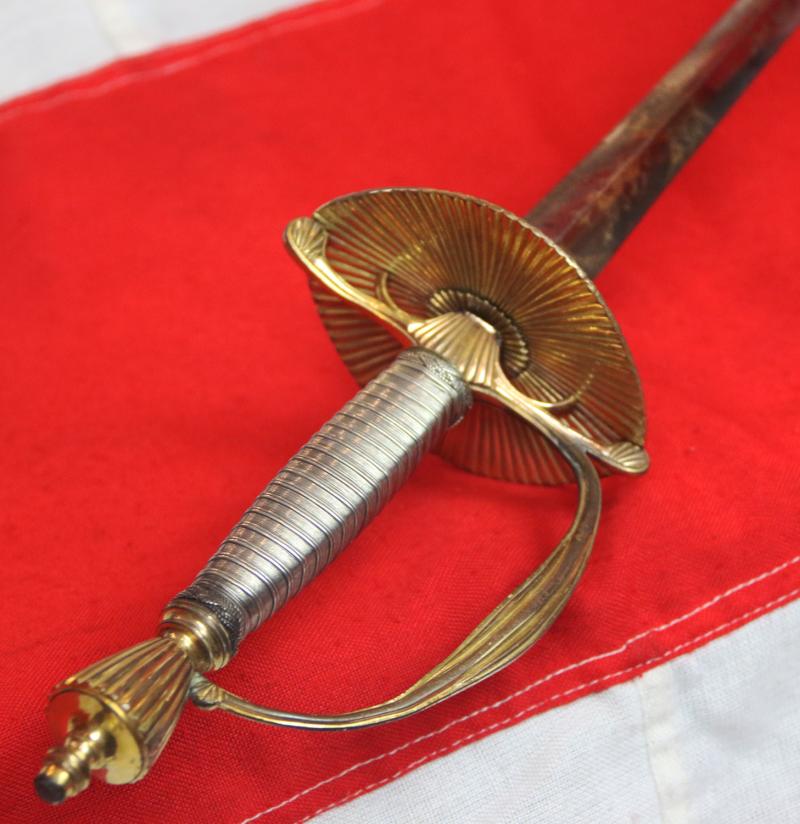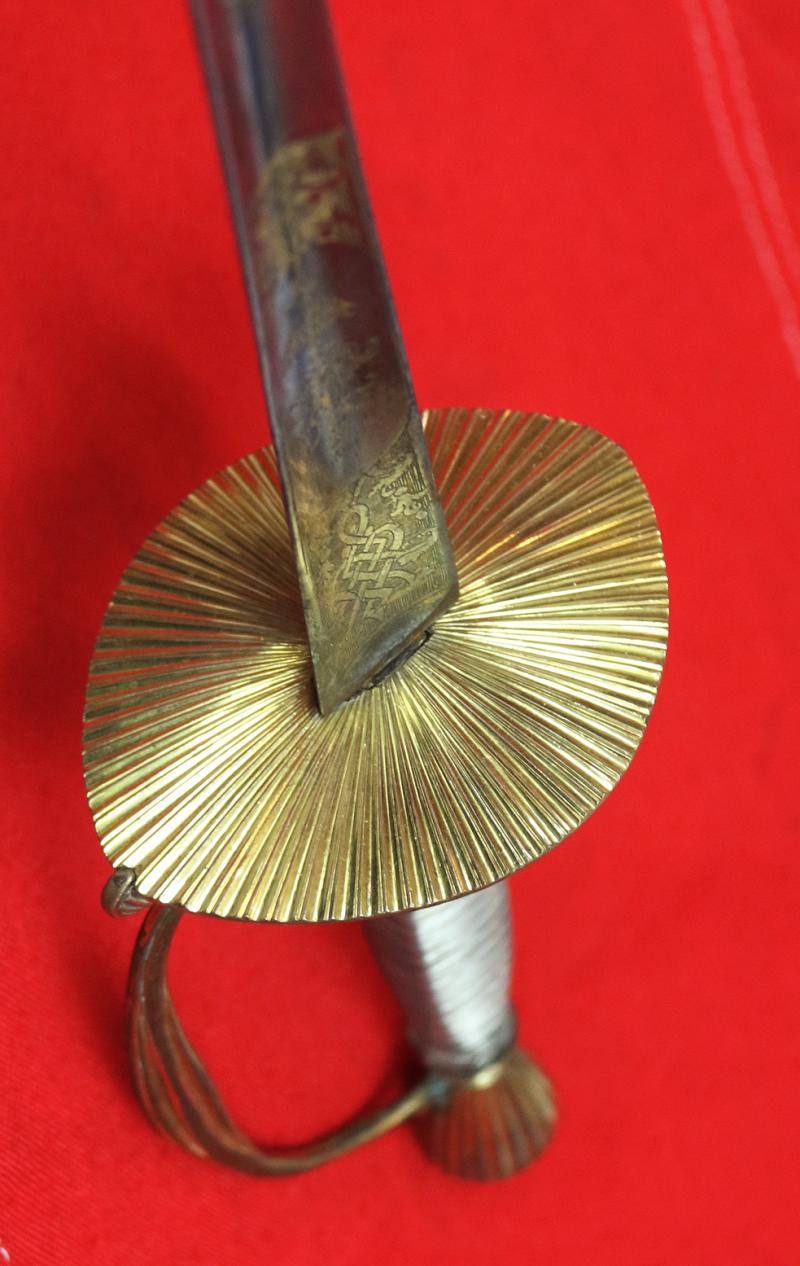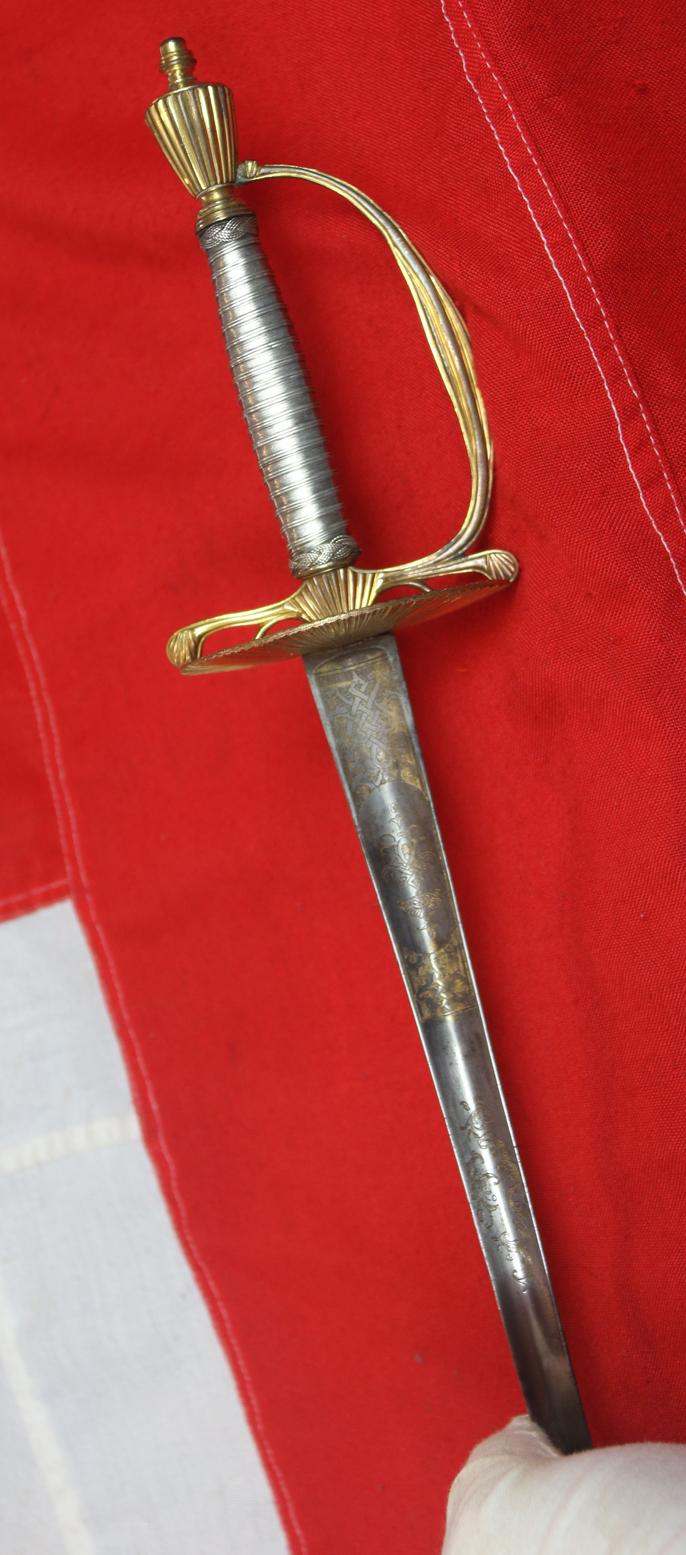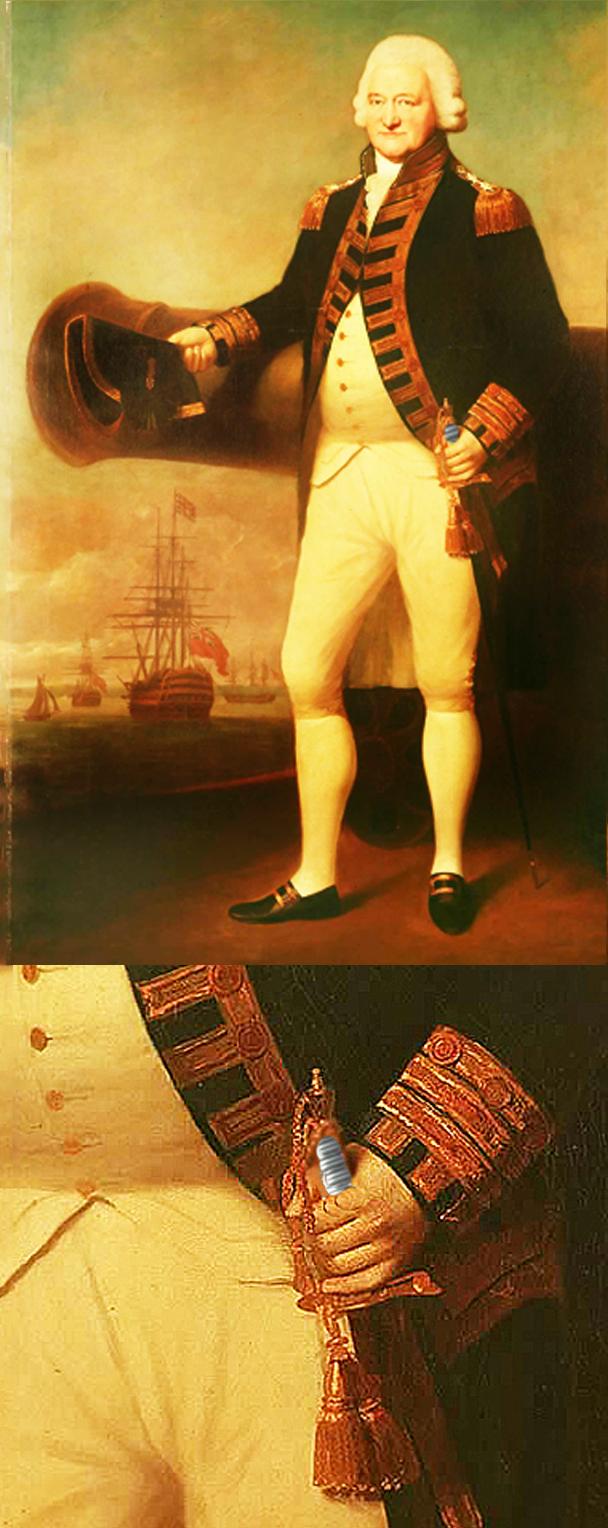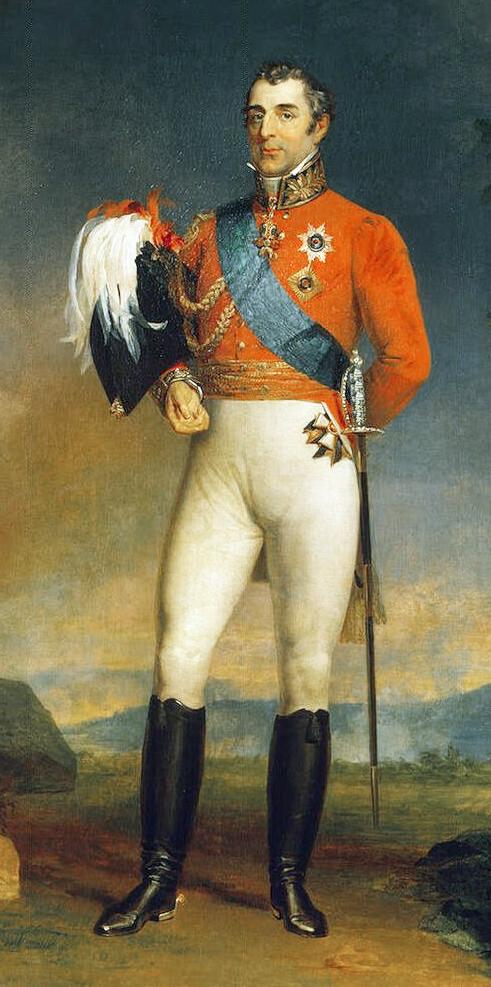A Wonderful, Napoleonic Wars Period Museum Piece, A Highest Ranking British Officer's Sword Bespoke Commisioned For The Highest Ranking Officers of Both The Navy or Army, A 1790's Admiral of the Fleet or Field Marshal's Sword In Fabulous Condition
A near identical sword was carried by Admiral of the Fleet Sir Peter Parker (1721 – 21 December 1811), and The Iron Duke, The Duke of Wellington.
Mercurial gilt fluted pattern hilt, with Adam urn pommel and solid silver triple wire binding, oval fluted hilt guard. Triple edged blade, with superb and elaborate engraving and traces of blue and gilt.
The sword used by the most senior of officers of the army and navy of Britain, field marshals and admirals of the fleet, and kings and princes of the royal family, since the 1780's until the 1820's.
Pictures in the gallery of Field Marshal the Duke of Wellington, Admiral of the Fleet Sir Peter Parker, and Field Marshal Prince Frederick, Duke of York and Albany.
This Anglo-Irish soldier, the Duke of Wellington, and statesman fought as Field Marshal of the British Army during the Napoleonic Wars. With the help from Prussian Marshal Gebhard Leberecht von Blücher, he defeated Napoleon at Waterloo on June 18, 1815 and became a hero in England.
The office of marshal was already well established in England by the 12th century, but the modern military title of field marshal was introduced into the British army in 1736 by King George II, who imported it from Germany. In Britain the rank came to be bestowed only upon a few senior army officers,
From the 1790's to the 1820's here are the Field Marshals of Britain
Henry Seymour Conway (1793)
HRH Prince William Henry, Duke of Gloucester and Edinburgh (1793)
Sir George Howard (1793)
HRH The Prince Frederick Augustus, 1st Duke of York and Albany (1795)
John Campbell, 5th Duke of Argyll (1796)
Jeffrey Amherst, 1st Baron Amherst of Montreal (1796)
John Griffin Griffin, 4th Baron Howard de Walden (1796)
Studholme Hodgson (1796)
George Townshend, 1st Marquess Townshend (1796)
Lord Frederick Cavendish (1796)
Charles Lennox, 3rd Duke of Richmond and Lennox (1796)
HRH The Prince Edward Augustus, 1st Duke of Kent and Strathearn (1805)
Arthur Wellesley, 1st Marquis of Wellington (1813)
HRH The Prince Ernest Augustus, 1st Duke of Cumberland and Teviotdale (1813)
HRH The Prince Adolphus Frederick, 1st Duke of Cambridge (1813)
HRH Prince William Frederick, Duke of Gloucester and Edinburgh (1816)
HRH Prince Leopold of Saxe-Coburg-Saalfeld (1816)
Charles Moore, 1st Marquess of Drogheda (1821)
The ranks of Admiral of the Fleet and Admiral of the Red were formally separated from 1805, with an announcement in the London Gazette that "His Majesty has been pleased to order the Rank of Admirals of the Red to be restored" in His Majesty's Navy..." as a separate role. The same Gazette promoted 22 men to that rank. From the nineteenth century onward there were also occasional variations to the previous requirement that only one Admiral of Fleet could serve at one time. In 1821 George IV appointed Sir John Jervis as a second admiral of the fleet, to balance the Duke of Wellington's promotion as a second Field Marshal in the British Army.
Admirals of the Fleet
12 March 1796 The Earl Howe
16 September 1799 Sir Peter Parker, Bt.
24 December 1811 King William IV at that time as The Duke of Clarence and St Andrews
19 July 1821 The Earl of St Vincent
Excellent condition overall , no scabbard.
Code: 24953
2450.00 GBP


